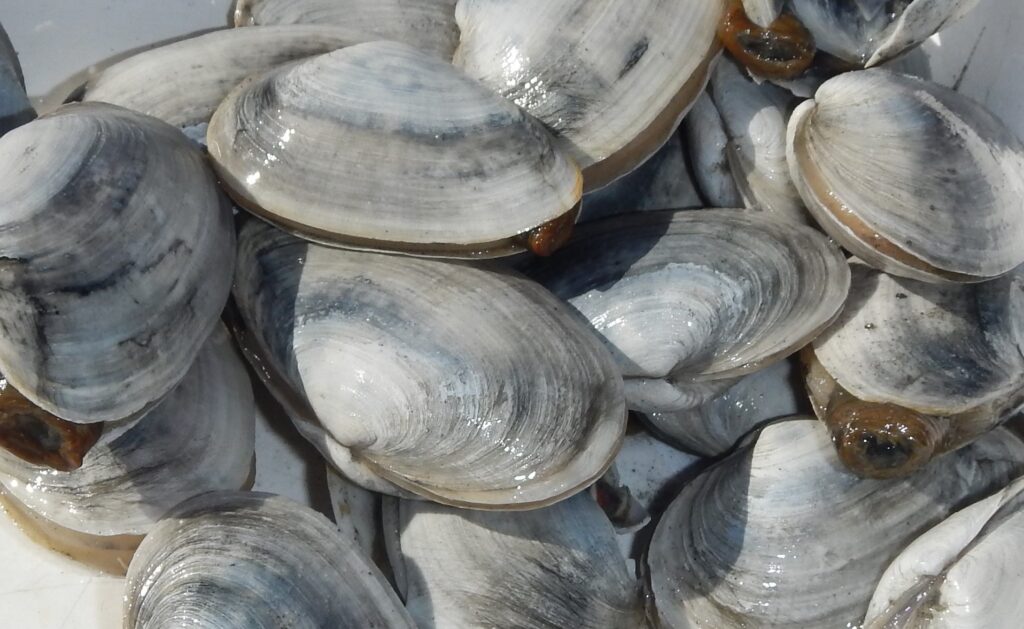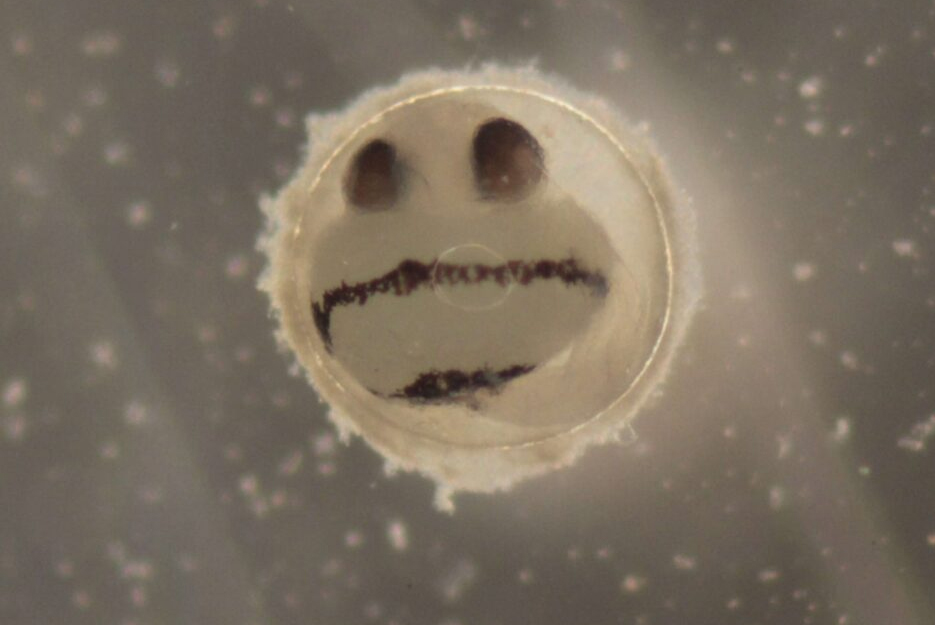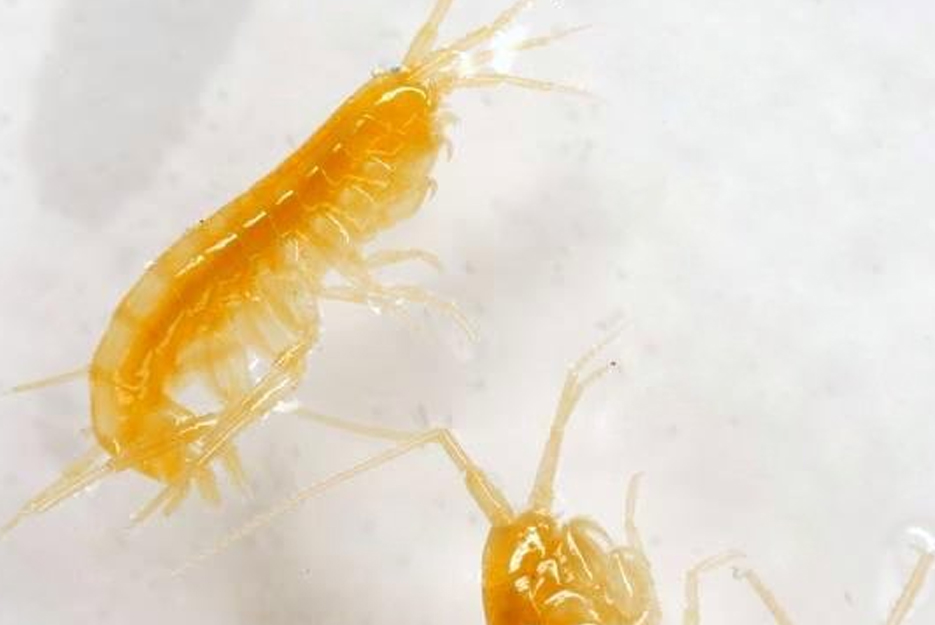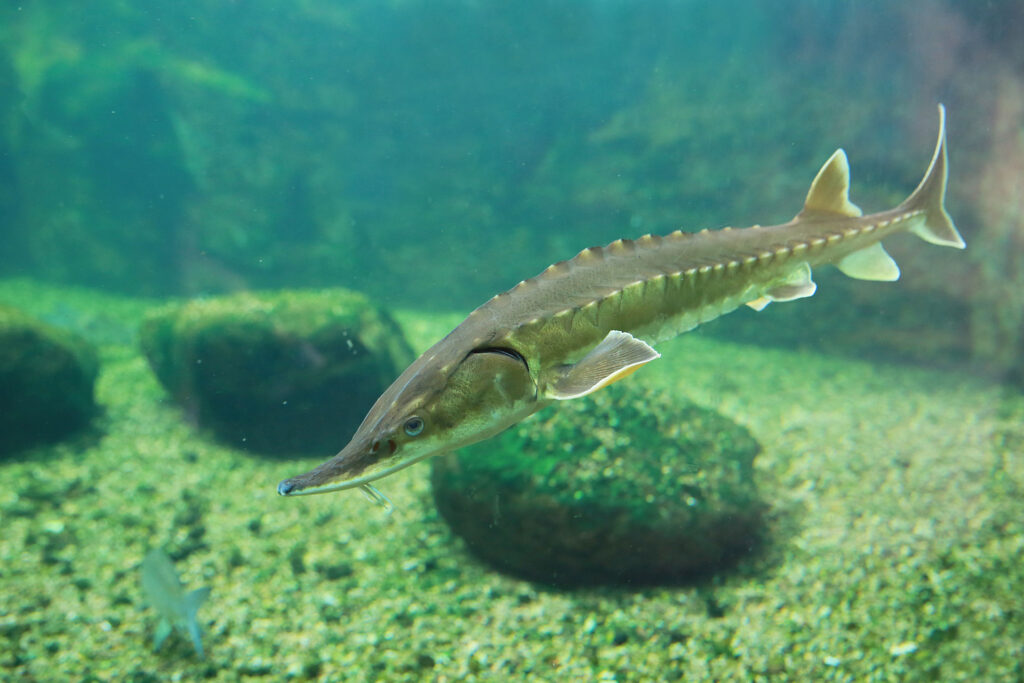This article’s featured “fish” isn’t a fish at all, but we’re making an exception because at Normandeau, the softshell clam (Mya arenaria) is a big deal!
If you haven’t heard of the softshell clam, you might have heard them called something else—“Steamers”—at the dinner table. They’re an edible mollusk and a staple in New England seafood. Despite the name, their shells aren’t actually soft; they’re just thinner and more breakable than other, sturdy-shelled clams in the area, like quahogs. They live buried in the sediment on tidal flats, but their presence can be given away at the surface by holes in the mud (caused by their siphons). People aren’t the only ones that think softshell clams are delicious—they are also food for seagulls, crabs, snails, raccoons, and more.
Like all clams, Mya arenaria are a type of bivalve mollusk. Mollusks are an invertebrate phylum with amazing diversity, not just in species but in body plan and habitat. They can range from many-limbed cephalopods (like squid and octopus) to armored chitons to shelled and unshelled gastropods (snails and slugs) to bivalves (clams, mussels, scallops, etc.). Bivalves have laterally compressed bodies and a two-part hinged shell (each shell part is called a valve, hence “bivalve”), and unlike the other types of mollusks, bivalves lack a head. Despite what cartoons may have you believe (like divers getting eaten by giant clams) no head means no jaws; so, most bivalves are filter feeders. They eat by drawing water into their shells through their paired siphons and trapping food particles using specialized gills. They’re so good at filter-feeding that they can improve water quality! Softshell clams are either male or female and they spawn externally. The fertilized eggs quickly develop into larvae, and the larvae go through a planktonic stage (meaning they live in the water column) for a few weeks before settling to the bottom and maturing. As they grow, they lay rings onto their shells, which can be used to estimate their age.
Mya arenaria have become invasive in other parts of the world (such as the Pacific and in parts of Europe), but they’re native to the Atlantic coastline. Besides their role in tidal ecosystems, the softshell clam is important to both commercial and recreational fisheries—that’s what happens when you’re delicious. Many organizations work to manage and maintain a sustainable population of softshell clams for the future. And in order to manage a species, you need data. Data is where we come in! Normandeau has conducted surveys of the clam flats in Seabrook, NH, for decades as well as surveys in Quincy, Beverly, and Weymouth, MA. We’ve also identified countless clams and bivalve larvae over the years for various projects, so softshell clams are a familiar sight around here.
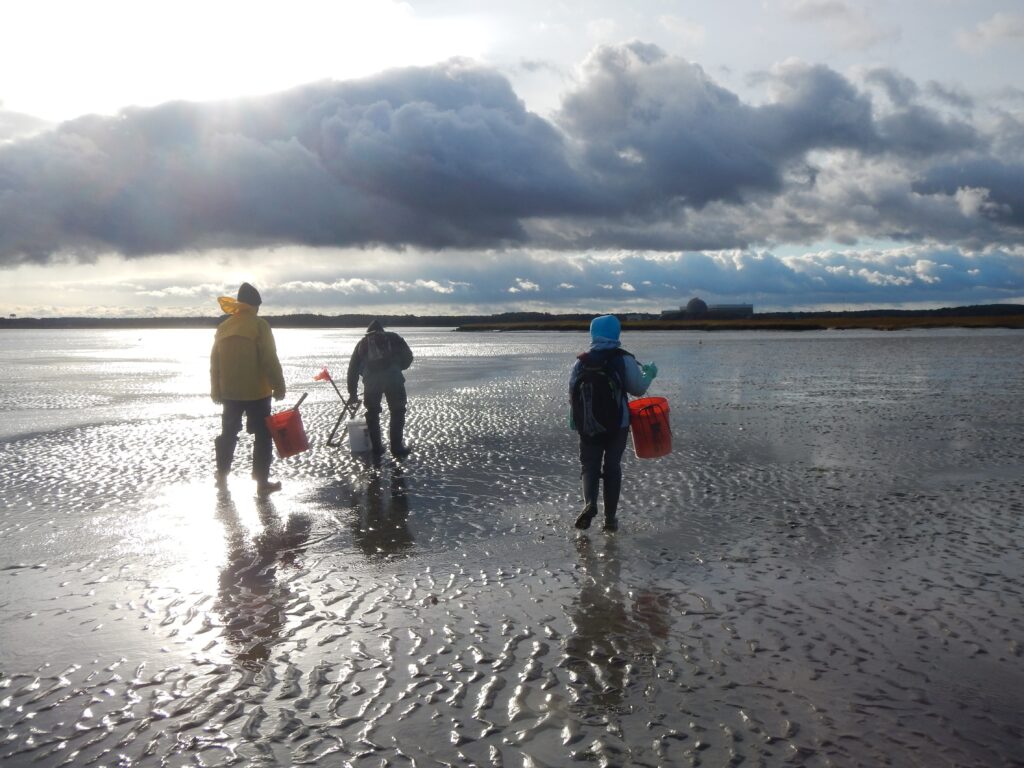
Predation (both human and otherwise) isn’t the only threat softshell clams face. Mya arenaria is one of the species susceptible to bivalve transmissible neoplasia (BTN), a transmissible cancer found in some bivalves. It’s a cancer that is contagious from individual to individual (not through an intermediate vector, such as a virus that produces cancer). There are only a few species in the world that have transmissible cancers (including Tasmanian devils, dogs, and damselfish). In the case of BTN, it is a leukemia-like parasitic cancer of the hemolymph system.
Don’t worry; BTN can’t be transmitted to humans, even if you eat steamers.
There is so much more we could say about Mya arenaria, but we should probably clam up and finish this article. We hope shelling out all these facts has given you some (sea)food for thought!
